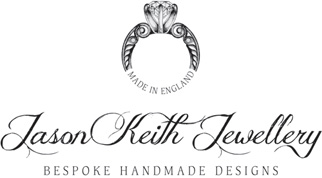History Of Diamonds

They form deep in the earth under extreme heat and pressure. Made solely of Carbon, Most Diamonds were formed at depths of 93 to 155 miles in the earths mantle and most natural diamonds have ages of between 1 billion and 3.5 billion years old.
It all started in India, where diamonds were gathered from the rivers and the streams. Diamonds have been known in India for at least 3000 years but most likely 6000! Many historians estimate that India was trading with Diamonds from as early as the forth century BC!
As time went on, India’s diamonds found there way to Western Europe and by the 1400s Diamonds were becoming fashionable amongst Europe’s most wealthiest.
By the 1700s Indias Diamonds supplies had begun to dwindle. Brazil had suddenly emerged as an important source for diamonds. They were first discovered in the pans of gold miners as they sifted through the gravel of local rivers. When brazil reached its full potential, they dominated the diamond market for more than 150 years.
So Why do we wear Diamond engagement rings as Apposed to other Gemstones?
While Engagement rings have been around for centuries, the use of diamonds hasn’t really been around that long. This is simply because there weren’t all that many diamonds readily available on the world market, so diamond engagement rings were pretty rare even up until the late 19th Century. An early exception was Archduke Maximilian of Austria whom proposed to Mary of Burgundy in 1477 with a Diamond Engagement ring.
So if diamonds weren’t used, what was?

Well during the 16th and 17th century A Gimmal ring was often used as an engagement ring. A Gimmal ring is a ring with two or three links that fit together to form one complete ring, a bit like a puzzle. They were also known as joint rings in Elizabethan England.
In the 16th and 17th centuries, such rings were fashionable in England, Germany, and some other countries. The engaged couple would wear one link each and rejoin them to use as a wedding ring. With triple link rings, a third person could witness the couple’s vows and hold the third part of the ring until the marriage.
Ancient Times
Although ancient Egyptians are often credited for inventing the engagement ring and Ancient greeks with having adopted the tradition, the actual history of the engagement ring can only really be reliably traced back to Ancient Rome. In the second century, the Roman bride-to-be was given two rings, a gold one which she wore in public, and one made of iron which she wore at home while attending to household duties.
Victorian Era
During the victorian era diamonds were found in 1866 in South Africa. By 1872 the diamond mines were producing more than a Million carats every year! As a result, those of lesser means were now able to afford diamonds and production was increased.
De Beers And Marketing.
The popularity of the diamond engagement ring really declined after the first world war and even more so in The United States during the great depression. In the 1930s the price of diamonds collapsed and the diamond industry was in a very bad way. In 1938 De Beers alone started a marketing campaign that would change the way we see engagement rings today. After the initial market researching phase, advertising started in 1939. The very first stage of the campaign was educating people on the 4 Cs, Cut, Clarity, Colour and carat. This new information on the Gemstone gave interest and people started to respond.
More information on the 4 Cs can be found on my Diamond Guide.
Hollywoods biggest stars and Celebrity’s were wearing diamonds. This encouraged leading fashion designers to take note and diamond rings became a new trend.
By 1947 the slogan “A Diamond Is Forever” was introduced. This slogan alone helped underscore the diamond’s significance as an enduring, unbreakable symbol of love and is still used to this day.
